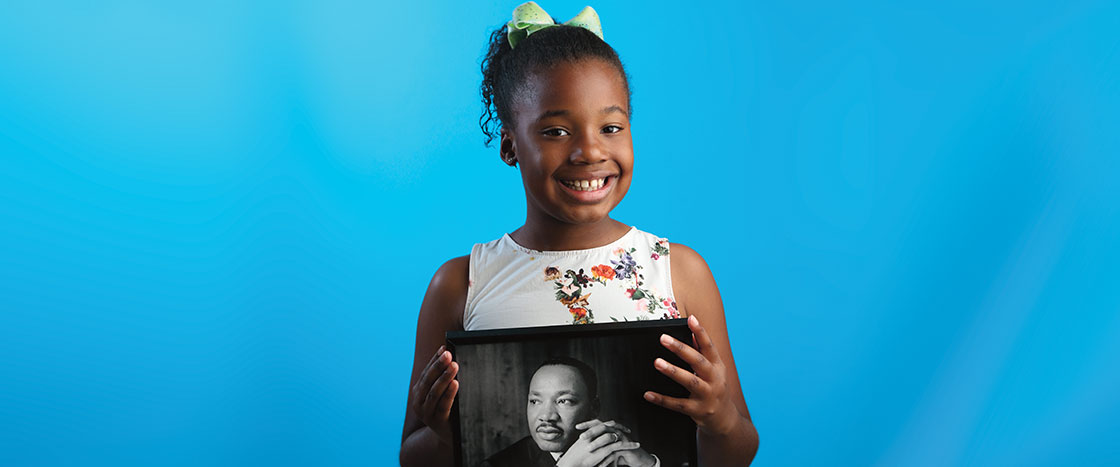Twelve-year-old Yolanda Renee King stood on the steps of the Lincoln Memorial in Washington, D.C. Thousands of people crowded around her.
“We stand and march for love!” Yolanda shouted into a microphone. The audience roared and clapped.
It was August 28, 2020. Yolanda was speaking at a protest inspired by one that had happened 57 years earlier: the March on Washington.
On that sunny summer day in 1963, more than 250,000 Americans had gathered in this same spot. There were people of all ages and races and backgrounds, from every corner of the country. But they were all there for the same reason—to demand equality for Black Americans.
The protesters were led by a man who would become one of America’s greatest heroes: Dr. Martin Luther King Jr. During the 1950s and 1960s, Dr. King was one of the leaders of the civil rights movement, a struggle to end discrimination against Black people.
“I have a dream,” Dr. King told the crowd, “that my four little children will one day live in a nation where they will not be judged by the color of their skin but by the content of their character.” His speech became known as one of the most important moments of the civil rights movement—and all of U.S. history.
But to Yolanda, Dr. King is more than just a famous American. He was her grandfather.
Yolanda never had the chance to meet Dr. King. Tragically, he was shot and killed in 1968, 40 years before she was born. Yet Yolanda is one of many people working to continue his mission today.
“We will fulfill my grandfather’s dream!” she promised the crowd that day in August.
Twelve-year-old Yolanda Renee King was in Washington, D.C. She stood on the steps of the Lincoln Memorial. Thousands of people crowded around her.
It was August 28, 2020. Yolanda was speaking at a protest. The protest was inspired by the March on Washington. That march happened in 1963, 57 years earlier.
On that sunny summer day, more than 250,000 Americans had come together in this same spot. There were people of all ages and races and backgrounds. They were from every corner of the country. But they were all there for the same reason. They were demanding equality for Black Americans.
The protesters were led by Dr. Martin Luther King Jr. He would become one of America’s greatest heroes. During the 1950s and 1960s, Dr. King was a leader of the civil rights movement. The civil rights movement was a struggle to end discrimination against Black people.
“I have a dream,” Dr. King told the crowd, “that my four little children will one day live in a nation where they will not be judged by the color of their skin but by the content of their character.” This speech became one of the most important moments of the civil rights movement. It also became one of the most important moments in U.S. history.
But to Yolanda, Dr. King is more than a famous American. He was her grandfather.
Yolanda never got to meet Dr. King. He was shot and killed in 1968—40 years before Yolanda was born. Yet Yolanda is one of many people continuing his mission today.
“We will fulfill my grandfather’s dream!” she promised.

